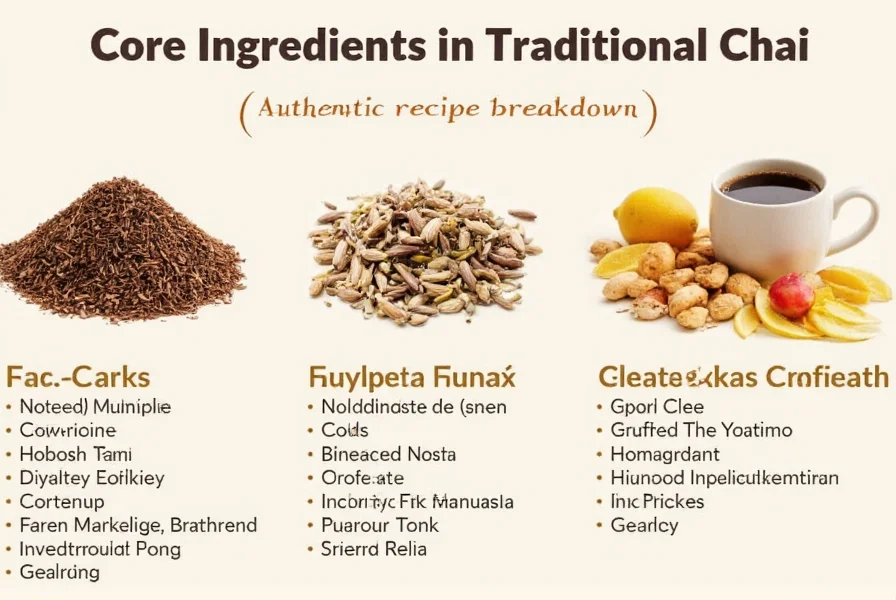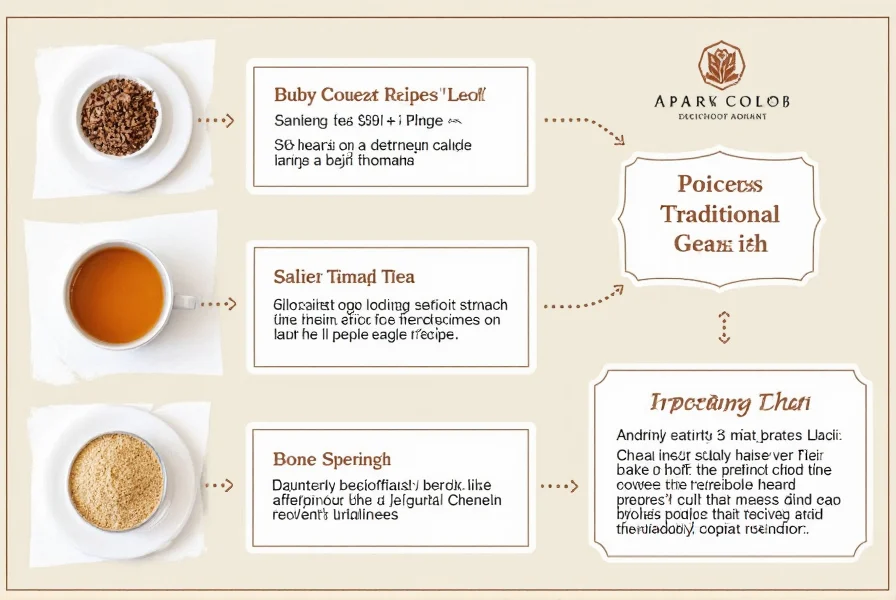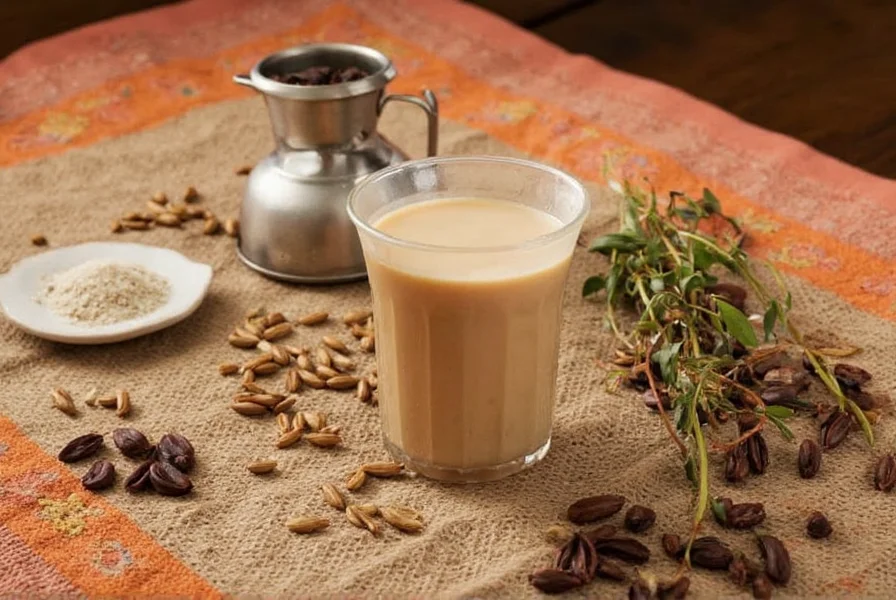Chai, meaning simply “tea” in Hindi, has evolved into a globally beloved spiced beverage with deep cultural roots in India. What many Western consumers call “chai tea” is actually a redundancy—in India, “chai” refers to the spiced preparation itself. Understanding the authentic ingredients in chai reveals a complex interplay of flavors developed over centuries, not merely a tea bag steeped in milk.
The Essential Components of Authentic Chai
While regional variations exist across the Indian subcontinent, traditional chai maintains a consistent foundation of ingredients that create its distinctive flavor profile. These components work synergistically during the brewing process to produce chai's characteristic warmth and complexity.
Tea Base: The Foundation
Authentic Indian chai traditionally uses strong black tea varieties, particularly Assam tea known for its robust, malty flavor that stands up to spices and milk. The CTC (Crush, Tear, Curl) processing method creates small, uniform tea particles that brew quickly and deliver intense color and flavor. This differs significantly from Western tea preparations that often use whole-leaf varieties.

Spice Blend: The Heart of Masala Chai
The term “masala chai” translates to “spiced tea,” with “masala” referring to the spice mixture. Traditional spice combinations include:
- Fresh ginger: Provides sharp, warming heat (typically 1-2 inches per serving)
- Green cardamom: Offers floral, citrus notes (3-4 pods per serving)
- Cinnamon: Adds sweet warmth (1 small stick per serving)
- Cloves: Contributes pungent, slightly bitter depth (2-3 per serving)
- Black peppercorns: Delivers subtle heat and enhances bioavailability of other spices (3-5 per serving)
Some regional variations incorporate star anise, fennel seeds, or nutmeg, but the core quintet remains consistent across most traditional preparations. The spices are typically crushed fresh to release essential oils before brewing.
Milk and Sweetener: Completing the Profile
Full-fat dairy milk is essential in traditional chai preparation, creating the creamy texture and balancing the spices' intensity. The milk proteins interact with tea tannins to produce chai's signature smoothness. While cow's milk predominates in most regions, buffalo milk appears in some areas for its richer texture.
Sweetness traditionally comes from either white sugar or jaggery (unrefined cane sugar), with the sweetener added during brewing to caramelize slightly and integrate with the spices. The sugar-to-liquid ratio typically ranges from 1:8 to 1:5 depending on regional preferences.
Regional Variations Across India
India's diverse regions have developed distinctive chai preparations reflecting local tastes and available ingredients. Understanding these variations provides insight into the flexibility of traditional chai ingredients:
| Region | Distinctive Ingredients | Preparation Notes |
|---|---|---|
| Northern India | More cardamom, less ginger | Brewed longer for stronger spice infusion |
| Southern India | Increased ginger, black pepper | Often includes curry leaves for complexity |
| Eastern India | Star anise, fennel seeds | Sweeter profile with more jaggery |
| Western India | Additional nutmeg, saffron | Often uses buffalo milk for richness |
Modern Adaptations and Common Misconceptions
As chai has gained global popularity, numerous adaptations have emerged that differ significantly from traditional ingredients in masala chai. Many Western “chai lattes” use pre-made syrups containing artificial flavors, high-fructose corn syrup, and minimal actual spice content.
Understanding the difference between authentic preparation and commercial versions helps consumers seeking genuine chai experience. Traditional chai requires fresh ingredients simmered together, not merely tea with added flavoring. The health benefits often associated with chai primarily derive from the synergistic effects of fresh spices, particularly ginger's anti-inflammatory properties and cinnamon's blood sugar regulation effects.

Creating Authentic Chai at Home
Recreating traditional chai requires attention to ingredient quality and preparation technique. Start with fresh, whole spices rather than pre-ground versions, as the essential oils responsible for flavor degrade quickly after grinding. The proper brewing sequence matters: spices should simmer in water first to extract flavors before adding tea and milk.
For the most authentic experience, use a small saucepan (traditionally called a “degchi”) and simmer the ingredients uncovered to allow proper concentration of flavors. The ideal chai achieves a perfect balance where no single ingredient dominates, creating a harmonious blend that's simultaneously spicy, creamy, and aromatic.
Frequently Asked Questions
What are the essential spices in traditional masala chai?
Traditional masala chai contains five essential spices: fresh ginger, green cardamom pods, cinnamon sticks, cloves, and black peppercorns. These create the foundational flavor profile, though regional variations may include additional spices like star anise or fennel seeds.
Is there a difference between chai and masala chai ingredients?
Yes, “chai” simply means “tea” in Hindi and technically refers to any tea preparation. “Masala chai” specifically denotes spiced tea, with “masala” meaning spice blend. All masala chai is chai, but not all chai is masala chai—plain tea with milk would be chai but not masala chai.
Can I make authentic chai without dairy milk?
Traditional chai uses dairy milk for its protein content which interacts with tea compounds to create the characteristic texture. While non-dairy alternatives like oat or soy milk can be used, they produce a different mouthfeel and flavor profile. For closest approximation, use full-fat coconut milk which has similar fat content to dairy.
How do chai ingredients vary between Indian regions?
Northern India uses more cardamom with less ginger, Southern India increases ginger and black pepper (sometimes adding curry leaves), Eastern India incorporates star anise and fennel with more jaggery, while Western India adds nutmeg or saffron and often uses buffalo milk for greater richness.
What's the difference between commercial chai mixes and authentic ingredients?
Commercial chai mixes often contain artificial flavors, sweeteners like high-fructose corn syrup, and minimal actual spice content. Authentic preparation uses fresh, whole spices simmered with tea, milk, and natural sweeteners. The health benefits associated with chai primarily come from the fresh spices in traditional preparation, not commercial syrups.











 浙公网安备
33010002000092号
浙公网安备
33010002000092号 浙B2-20120091-4
浙B2-20120091-4